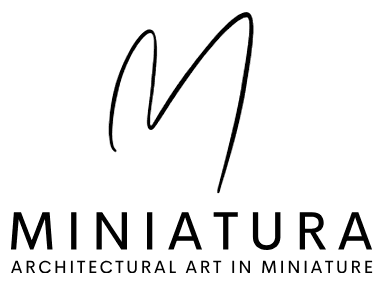The Art of Architectural Scale Models: Why They Still Matter in a Digital World
MG
In an era where architects and developers have access to advanced 3D renderings, immersive virtual reality, and AI-powered design tools, you might wonder: are physical architectural models still relevant? The answer is a resounding yes. Architectural scale models remain one of the most powerful tools for communicating vision, inspiring confidence, and connecting emotionally with audiences.
At Miniatura, we see it every day, when a project goes from being an idea on paper to something people can actually see, touch, and walk around.
Why Physical Models Still Matter
1. Tangibility and Human Connection
Digital renderings are impressive, but they exist behind a screen. A physical scale model allows people to gather around it, point to details, and engage in real-time conversation. It creates an emotional bond that a flat image cannot replicate.
2. Bridging the Gap Between Concept and Reality
For many clients, investors, or homebuyers, blueprints and digital plans can be difficult to interpret. A scale model makes the project accessible. It translates technical drawings into something anyone can understand instantly.
3. Trust and Persuasion
Real estate developers and architects know that decisions often hinge on trust. A beautifully crafted model conveys professionalism and precision. It reassures stakeholders that every detail has been considered.
The Competitive Edge for Developers
Developers in particular benefit from models because:
They accelerate sales by helping buyers visualize finished projects.
They stand out at trade shows or sales offices where competition is fierce.
They tell a story, showing not only the building itself but the context: streetscapes, parks, amenities, and landscaping.
At Miniatura, we’ve seen firsthand how a model displayed in a showroom transforms the sales process from abstract conversation to concrete commitment.
Case Study: From Vision to Sales
When a Montreal-based developer approached Miniatura to create a model for a new condominium project, they had stunning renderings but needed something tangible for their sales center. The finished model, built at 1:100 scale, showcased the exterior design, balconies, and surrounding streetscape. Within weeks, prospective buyers were interacting with the model, pointing out units, and asking questions that led directly to signed contracts. The developer reported faster pre-sales and a higher level of buyer confidence.
Models Complement Digital Tools
It’s not about either or physical models and digital renderings work best together. A digital tour can immerse a client inside a unit, while a model provides a full context of the project in its environment. Together, they create a seamless, multi-sensory experience that sells.
Miniatura’s Commitment to Craftsmanship
Every model we create is built with precision, artistry, and a deep respect for the architect’s vision. From tiny railings and textured surfaces to realistic landscaping and lighting, our models are designed to inspire and impress. We use modern tools like laser cutting and 3D printing, but it’s the craftsmanship, the human touch, that makes each project unique.
In a fast-moving digital world, architectural scale models remain timeless. They ground projects in reality, inspire confidence, and help clients, investors, and buyers connect on a personal level. At Miniatura, we believe that bringing a vision into the third dimension is not just about presentation, it’s about persuasion.
Are you planning your next architectural project? Let Miniatura help bring it to life in three dimensions. Contact us today to start the conversation.
© 2025 Miniatura Inc. All rights reserved.
